30 January 2017
Another long day of driving. Stopped for gas and breakfast (Skillets) in Del Rio. When I went back and checked my notes we had eaten at this same restaurant in January 2014 when we did our Big Adventure (trip around the perimeter of the U.S. in a year). The food wasn’t any better this visit than the previous visit. Pretty standard fare, nothing fancy.
Our destination for the night is Falcon State Park located 200+ miles south of Amistad National Recreation Area (NRA). We try to bird along the way, but let me tell you that didn’t happen much as Texans like to drive FAST. Periodically we did pull over to check out a hawk of two. After about 50 miles it seemed as though the Harris’ Hawks began outnumbering the Red-tailed Hawks. And least we forget, we started seeing Crested Caracara too. Fun!!!
The intent was to stop at the Las Palmas Trail in Laredo to look for the White-collared Seedeater. This bird had been seen as recently as Saturday, and listed on eBird rare bird alert. One nice thing about the alerts is there is a link to google maps included in the listing and you can find out where the bird was last seen. So off we went, only to be stopped, within spitting distance of our destination, by an emergency vehicle blocking the road. This area isn’t the best part of town, the roads are narrow and many one-way, so we decided not to find away around the the vehicle and seek out the bird.
We did make a quick stop in the afternoon – around 2:00 pm – at San Ygnacio – a bird sanctuary (Site #087 on the Lower Rio Grande Bird Trail Map). In previous visits we’ve seen Green Jays, Orioles, and Plain Chacalacas here. Only saw the Green Jays today, although we did see White-tipped Doves, a Gray Hawk, and an Olive Sparrow. The ever present border patrol asked us where we parked and what we were doing here. Guess they don’t want any strange vehicles in the area, since this site is along the Rio Grande (i.e., Mexican border). But never fear a wall will be built to keep people from seeking a better life.
Got to Falcon State Park around 4:30 pm, found a campsite, and went to check out the birds along one of the park’s trails. Mostly what I saw were Northern Mockingbirds – probably around 20-30 of them. They even out-numbered the Yellow-rumped Warblers, which we always seem to find in good sized flocks.
I want to mention that if you ever intend to come to Texas to bird and you plan to visit or stay in Texas State Parks you might want to consider their Annual Pass. When you camp in a state park not only do you have to pay the camping fee, but you have to pay the day-use fee as well. This can add up since most day use fees are $5-6 per person – yes per person (kids under 12 are free). The $70 Annual Fee allows free day-use, plus you get a discount on four nights of camping (half price), provided you say at least two nights. So the first night is full price and the second night is half price. You can quickly save money.
Tomorrow we head to Salineno, a small town south of Falcon State Park with great birding. Last time we were here we checked the guest register and saw the names of birders we knew from Homer and Anchorage. Small birding world.
31 January 2017
After a morning of pancakes with blueberries, raspberries, and blackberries, we set off to bird the Falcon State Park campground. One of the campground hosts mentioned a good place for birds (near the recreation center) so off we went. While we saw some good birds, there wasn’t a whole lot moving around yet – at least no songbirds.
Bird Species Seen or Heard at Falcon State Park (three days/two nights)
- Northern Mockingbird (they are everywhere in the park – too many)
- Verdin
- Northern Cardinal
- Orange-crowned Warbler
- Great Kissadee
- Eastern Meadowlark
- Yellow-rumped Warbler
- Pyrrhuloxia
- Crested Caracara
- Osprey
- Great Blue Heron
- Great Egret
- Black-tailed Gnatcatcher
- Ruby-crowned Kinglet
- Great-tailed Grackle
- Red-winged Blackbird
- Eurasian Collared Dove
- American White Pelican
- Green Jay
- Ladder-backed Woodpecker
- Greater Roadrunner
Next stop was the Salineno Bird Sanctuary. This land, purchased by a land trust, is actually a part of the Lower Rio Grande National Wildlife Refuge. For the past 8 years, a couple from Iowa have volunteered here, from mid October to mid-March, managing the sanctuary. They put out bird seed, corn, oranges, and a peanut butter/lard/corn meal mix. I should ask them how much of the peanut butter mix they go through in a season. I’m sure it is a lot because based on the bird activity at the feeding area, that is one of the birds’ favorite foods. At one point, while we were there, at least 10 people were sitting in the chairs enjoying the show. So what did we see:
Bird Species Seen or Heard at Salineno Bird Sanctuary
- Red-winged Blackbird
- Great-tailed Grackle
- Green Jay
- Great Kissadee
- Northern Mockingbird
- White-winged Dove
- Inca Dove
- Eurasian Collared Dove
- White-tipped Dove
- Black-crested Titmouse
- Yellow-rumped Warbler
- Orange-crowned Warbler
- Crested Caracara
- Golden-fronted Woodpecker
- Long-billed Thrasher
- Northern Cardinal
- Altamira Oriole
- Plain Chacalaca
- Ruby-crowned Kinglet
- Lincoln Sparrow
- Olive Sparrow
- Blue-gray Gnatcatcher
- Spotted Sandpiper
- Osprey
- Turkey Vulture
- Sharp-shinned Hawk
- Great Blue Heron
- Cormorant sp.
- Wren sp. (I think a House Wren)
Hard to believe tomorrow is February already. We will leave Falcon State Park and head towards McAllen, Texas. This is the heart of Lower Rio Grande birding. So many places to go, so many birds to see. There are no public campgrounds in the area so we will stay in a motel for three nights. From there the goal is to head to South Padre Island for more birding.
1 February 2017
Went back to Salineno Bird Sanctuary before heading south –hoping to see the Audubon’s Oriole. Woohoo, Score!!! Two came to the feeders several times. Lots of Red-winged Blackbirds coming in and out of the feeding area – they flush easily even with no incentive like a marauding Sharp-shinned or Cooper’s Hawk. A pleasant surprise was the sight of a single Yellow-headed Blackbird among the Red-wings. Hard to miss that brilliant yellow head. We stayed at the feeders for about 1.5 hours just enjoying the show. The Plain Chacalacas with their calacas call were fun to watch as they stealthily made their way to the feeders. For a big bird they sure can blend in well. One of them had a bum leg so was hopping around trying to feed on a single foot. Not easy to hop about, but it managed to chow down and scatter quickly when alarmed.

There were a lot of Great Kissadees at the sanctuary and boy are they loud – their call is, of course, kissadee
In McAllen Texas, our home base for the next three nights, we . We are staying in a Motel 6 Studio 6, which has a nice kitchenette with the room. Motel 6 has updated many of their hotels, including this one. Very nice, modern rooms. My only criticism is the lounge chair they have in the room – not comfortable at all. A minor inconvenience, however.
We attempted to bird Anzalduas County Park, near Mission Texas. This park is unusual in that if you look north from the park you are actually looking into Mexico. The river bends such that a small peninsula of Mexico is actually north of the park. When I say we attempted to bird the park we were stopped by a Sheriff’s Deputy at the entrance – on top of a levee. Looking into the park we saw about 10 Border Patrol and related vehicles. So it looks like they were either conducting an exercise (but then why was there a TV station van present) or they were capturing illegal immigrants coming into the country. I suspect the latter.
Bentsen-Rio Grande State Park is only about 3-4 miles away from Anzalduas County Park so we went there to bird instead. Jack decided to stay in the parking lot with Doodlebug (it was 1:00 pm, little wind, and hot as hell out) while I birded. There is a $5.00/person entrance fee (oh wait, I had an annual pass so I didn’t have to pay the fee) and one can walk the roads (closed to traffic except for Border Patrol, Park Personnel, and the Park’s trams) to enjoy the beauty and birds of the area.
Under a post sporting an empty feeder (think peanut butter/suet), I saw a Clay-colored Thrush. The thrush kept looking up at the feeder maybe hoping peanut butter would fall out. When that didn’t happen, the bird would hop up onto the feeder hoping to disgorge any remaining peanut butter from the feeder – there was none. When I came back down the trail/road about 30 minutes later the thrush had given up.
Speaking of Border Patrol, so I am walking down the road and I come to this picnic area with lots of birds moving among the trees. So, naturally, I stop to check them out. I notice two men walking down the road towards me. When they get near me (although I am 50 feet off the road) they start running. I then hear someone in a vehicle talking to the men. I can’t hear well enough to know if they are speaking English or Spanish. The vehicles then continued on. Within the next 10 minutes or so there are all these Border Patrol, Park Personnel, and Park Police traveling up and down the road. I assume it was in regards to the two men I saw, but I don’t know. When I got back to the parking lot there were about 10 Border Patrol vehicles, 2 State Police vehicles, and Park Personnel surrounding a Black truck. A man and woman standing next to the truck were talking to the various officers. The man was not one of the men I had seen running. So, don’t know if they caught anyone or not. A little surreal. We left before the saga unfolded.
Tomorrow we are going back to Bentsen-Rio Grande State Park, but early before it heats up. Hopefully more birds will be out and about and we won’t have all the drama of today.
Bird Species Seen or Heard at Bentsen-Rio Grande State Park
- Green Jay
- Plain Chacalaca
- Northern Cardinal
- Orange-crowned Warbler
- Clay-colored Thrush
- Great Kissadee
- Blue-gray Gnatcatcher
- America White Pelican
- Pied-billed Grebe
- Snowy Egret
- Double-crested Cormorant
- Neotropical Cormorant
- Eastern Phoebe
- White-eyed Vireo
- Great-tailed Grackle
- Northern Mockingbird
- House Sparrow
- Golden-fronted Woodpecker
- Red-winged Blackbird
2 February 2017
Woke up to thick fog, which was a little surprising. Guess I don’t think of fog in Texas. We drove back out to the Bentzen-Rio Grande State Park. No excitement today, Border Patrol or otherwise (including bird wise). We did see 30 different species at the park, but no life birds or first of year birds. We spent about 3.5 hours in the park and walked about 3.5 miles, which is about right – one mile per hour. Typical birding. We did discover that dogs are allowed in the park and on the trails, so Doodlebug joined us, sniffing her way along, with frequent water stops. When we were done she (and we) was one tired puppy.

Road within the park – only authorized vehicles are allowed to drive on the roads. Visitors can walk the road or ride bikes. Most people were riding bikes.
Bird Species Seen or Heard at Bentzen-Rio Grande State Park
- Green Jay
- Plain Chacalaca
- Northern Cardinal
- Orange-crowned Warbler
- Great Kissadee
- Blue-gray Gnatcatcher
- Pied-billed Grebe
- Snowy Egret
- Double-crested Cormorant
- Neotropical Cormorant
- Eastern Phoebe
- White-eyed Vireo
- Great-tailed Grackle
- Northern Mockingbird
- Golden-fronted Woodpecker
- Red-winged Blackbird
- Long-billed Thrasher
- Altamira Oriole
- Olive Sparrow
- Mourning Dove
- Ladder-backed Woodpecker
- White-tipped Dove
- Crested Caracara
- Verdin
- Red-tailed Hawk
- Yellow-rumped Warbler
- American Kestrel
- Osprey
- Northern Shoveler
- American Coot
- Black-crested Titmouse
From Bentsen-Rio Grande State Park we drove to Anzalduas County Park. When we got there around 1:00 pm in the afternoon there were still a surprising number of Border Patrol, State Police, and County Sheriff vehicles parked along the river. Not sure what is going on there still, but luckily the park was open. Despite the heat (85 degrees and humid), we did get 17 different species.
Bird Species Seen or Heard at Anzalduas County Park
- Yellow-rumped Warbler
- Turkey Vulture
- Osprey
- American Coot
- Pied-billed Grebe
- Least Grebe
- Orange-crowned Warbler
- Cooper’s Hawk
- American Kestrel
- Eastern Phoebe
- Gadwall
- Lesser Scaup
- Mexican Mallard
- Blue-winged Teal
- Mottled Duck
- Snowy Egret
- Black Phoebe
- Great Blue Heron
- Wren sp. – (missed seeing its head)
- Cormorant sp.
Decided to call it a day re: birding so went to the grocery store, came back to the motel, and did long overdue laundry. Tomorrow we are headed to Santa Ana National Wildlife Refuge and Edinburg Scenic Wetland Trails for more birding. The weather is suppose to be around 73 degrees F and cloudy. I whine about temperatures in the high 70s and above because we just don’t get those high temperatures in Homer Alaska in the summer.
3 February 2017
Woke up to fog and rain. I wanted to get an early start at Santa Ana National Wildlife Refuge today, but with the fog there probably wasn’t a need to get there early. Oh and the hundred of very small ants in our room slowed us down too. They were marching along the ceiling, down the wall, and into the kitchenette. We ended up changing rooms. Not sure how they got in or why. Usually ants go after sugar, but I didn’t have any sugar items left out. Jack thinks they were attracted to the cooking skillet smelling of sausage links from the previous evening’s meal. The pan was soaking in the sink. Hmmm.
Got to the Santa Ana National Wildlife Refuge around 9:00 am just as the fog was lifting. We birded the Chacalaca Trail (true to its name) and then ended up somehow on a USFWS service road. A no-no. Two staff members intercepted us to let us know we shouldn’t be on the road. Of course when we came to a fork in the trail earlier there was no signage telling us which direction to take or that the road, that looks like a trail, was closed. Usually USFWS has a multitude of “Closed” signs. None at this fork. The staff person was okay about us being there – just escorted us out onto the regular trail. He wasn’t the most friendly person I’ve come across. Jack should have told them that if a “Closed” sign had been there that no way would I have gone beyond the sign. Of course one good thing about being on this trail, albeit illegally, was seeing a Common Yellowthroat. It has been quite awhile since I’ve seen one of my favorite warblers. Woohoo!!!
The refuge has a hawk tower (three towers actually, with a suspension bridge between two of them – I braved it). We climbed one of the towers, but alas no raptors observed. We did have some raptors later during our visit (e.g., three Harris Hawks together), but nothing out of the ordinary – such as a Gray Hawk.
Upon descending the hawk tower, we took the Pintail Trail that leads to several lakes. These lakes were quite productive with waterfowl, waterbirds, shorebirds, and all three kingfishers: Ringed, Green, and Belted. We stayed in this area for about an hour birding. Lots of birds to see.
In the end we observed 54 different species so quite a productive day of birding

Dead critter on the trail. If you’ve followed my blogs you know I like to photograph dead things. Luckily I’ve never found a dead human. That I would not photograph.

Pintail Trail – not much bird activity. Occasionally we came across mixed flocks of warblers, kinglets, and gnatcatchers.
Bird Species Seen or Heard at Santa Ana National Wildlife Refuge
- Red-winged Blackbird
- Great-tailed Grackle
- White-tipped Dove
- Green Jay
- Long-billed Thrasher
- Couch’s Kingbird
- Eastern Phoebe
- Great Kissadee
- Blue-winged Teal
- Altamira Oriole
- Killdeer
- Carolina Wren
- Gadwall
- Mottled Duck
- Northern Shoveler
- American Coot
- Cinnamon Teal
- Plain Chacalaca
- Northern Pintail
- Least Grebe
- Turkey Vulture
- Belted Kingfisher
- Yellow-rumped Warbler
- White-faced Ibis
- Common Yellowthroat
- Cooper’s Hawk
- Blue-gray Gnatcatcher
- Ruby-crowned Kinglet
- Black-crested Titmouse
- Ladder-backed Woodpecker
- Black-necked Stilt
- White Ibis
- Great Egret
- Green-winged Teal
- Black-bellied Whistling Duck
- Pied-billed Grebe
- Great Blue Heron
- Long-billed Dowitcher
- Spotted Sandpiper
- Tricolored Heron
- Green Kingfisher
- Greater Yellowleg
- Lesser Yellowleg
- Least Sandpiper
- Merlin
- Ringed Kingfisher
- Snowy Egret
- Ruddy Duck
- Neotropical Cormorant
- Common Gallinule
- Sora
- Harris’s Hawk
- White-eyed Vireo
- Northern Cardinal
We spent 3.5 hours birding the refuge and had a great time. We were happy to have a relatively cool (by Texas standards) day (long-sleeve weather).
To round out the day we went to another favorite birding spot – Edinburg Scenic Wetlands. Yes the Santa Ana National Wildlife Refuge is a must if you come down this way to bird, but so is the Edinburg Scenic Wetlands, in where else – Edinburg, Texas. We birded this small bird oasis for about an hour (it was cold and windy out) and managed to see 27 different species. In January 2014 we got all three kingfishers here: Ringed, Green, and Belted, but this year no kingfishers. There were plenty of waders though.
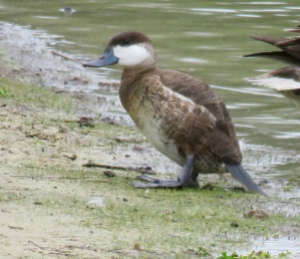
First time I’ve seen a Ruddy Duck out of water – they don’t walk so well with those feet so far back. The bird’s stance makes me think of a penguin.
Bird Species Seen or Heard at Edinburg Scenic Wetlands
- Blue-gray Gnatcatcher
- Anhinga
- Osprey
- Neotropical Cormorant
- Least Grebe
- Pied-billed Grebe
- American Coot
- Orange-crowned Warbler
- Green-winged Teal
- Cattle Egret
- Snowy Egret
- Tricolored Heron
- Great Blue Heron
- Black-crowned Night Heron
- Yellow-crowned Night Heron
- Great Egret
- Rudy Duck
- Northern Shoveler
- Cinnamon Teal
- Blue-winged Teal
- Great Kissadee
- White-eyed Vireo
- House Wren
- Yellow-rumped Warbler
- Inca Dove
- Northern Mockingbird
- Green Jay
Tomorrow the plan is to visit Estero Llano Grande State Park. We are hoping to catch good glimpses of the Tropical Parula and Rose-throated Becard spotted here recently. Wish us luck.
4 February 2017
Woke to rain. Forecast said light rain, but it seemed a little heavy to me. Stopped by the time we got to Estero Llano Grande State Park, but we birded under cool conditions and cloudy skies. This is another favorite area of ours. You can always find the Common Paraque here – go to the Alligator Pond. The birds usually roost close to the left-hand side of the trail on the way to the viewing platform. They camouflage well.
We spent three hours in the park walking the trails in search of birds. They have feeders near the visitor center and if you are patient you can generally see the Buff-breasted Hummingbird, which is a resident of the park. We did see the hummer.
A Rose-throated Becard has been spotted in the park near the Pavillion area, so off we went. When we got there we found about 15 birders with their binos all pointed upwards. So we hurried over and learned it wasn’t the Becard they were looking at, but theTropical Parula. Woohoo!!! Trip bird. We did see this bird in 2014 at Edinburg Scenic Wetlands, but always happy to see it again. The Rose-throated Becard, as you may recall, we saw in Arizona in January. And if you see a large group of birders in one spot they are either with an organized group or they are all in search of a rare bird for the area.
We had a productive day at the park with a total of 50 birds observed, including 6 FOYs (First of Years).

Looking at the trail from the dike. If you visit the park be sure and head over to the dike. Lots of good birds on the other side.
Bird Species Seen or Heard at Estero Llano Grande State Park
- Couch’s Kingbird
- Northern Mockingbird
- Great Kissadee
- Great-tailed Grackle
- Orange-crowned Warbler
- Gadwall
- Northern Shoveler
- American Coot
- Northern Cardinal
- Green-winged Teal
- Ring-necked Duck
- Least Grebe
- Red-winged Blackbird
- Golden-fronted Woodpecker
- Ruddy Duck
- Vermillion Flycatcher
- Common Gallinule
- Snowy Egret
- Mottled Duck
- Yellow-rumped Warbler
- Killdeer
- Wilson’s Snipe
- Spotted Sandpiper
- Tricolored Heron
- Plain Chacalaca
- Yellow-crowned Night Heron
- Anhinga
- Common Paraque
- Curve-billed Thrasher
- Black-crowned Night Heron
- Long-billed Thrasher
- Ladder-backed Woodpecker
- Great Blue Heron
- Black-necked Stilt
- American Avocet
- Tree Swallow
- White-tailed Kite
- Great Egret
- American White Pelican
- White-tailed Hawk
- Lincoln Sparrow
- Common Yellowthroat
- Little Blue Heron
- Black-crested Titmouse
- Buff-breasted Hummingbird
- Ruby-crowned Kinglet
- Tropical Parula
- Black & White Warbler
- Blue-gray Gnatcatcher
- raptor sp.
After leaving the park we headed to South Padre Island taking Highway 48. We enjoy birding along this road, and in particular the Jamie Zapata Memorial Boat Ramp. We were not disappointed. We did see 26 species of birds, including 12 FOYs. This spot seems to be a favorite location for birds. Most of the birds were some distance off so only got photos of the habitat.
Bird Species Seen or Heard at Jamie Zapata Memorial Boat Ramp
- Harris’s Hawk
- Osprey
- Snowy Egret
- Great Egret
- Brown Pelican
- Pied-billed Grebe
- Laughing Gull
- Black-necked Stilt
- Long-billed Dowitcher
- Greater Yellowleg
- American Osytercatcher
- Willet
- Black Skimmer
- Caspian Tern
- Royal Tern
- Forester’s Tern
- Herring Gull
- Black-bellied Plover
- Ruddy Turnstone
- Spotted Sandpiper
- Tricolored Heron
- Crested Caracara
- Reddish Egret
- Marbled Godwit
- American Avocet
- Yellow-crowned Night Heron
We are camping on the beach at South Padre Island, where we added the Sanderling to our list of trip birds. Not a bad day – 19 trip birds (First of Years). Today really was a great day to bird.

At first I thought this was a shoe string, but there was a lot of it on the beach. Not sure what it is???
Bird Species Seen or Heard at South Padre Island Beach
- Willet
- Sanderling
- Ruddy Turnstone
- Herring Gull
- Laughing Gull
- Royal Tern
- Forester’s Tern
- Ring-billed Gull
5 February 2017
Last night I woke up (around 2:45 am) to lights. People were walking the beach. So I watched. I saw them move up towards the dunes and then run off. Seems like there was a car there (found out the next morning in daylight). I think they shone their lights in the car and found it occupied. A couple from Minnesota with their child. Earlier in the day the child was running between the car and the ocean. I’m not sure what the parents were thinking – obviously they weren’t – because cars were driving up and down the beach and sometimes at ridiculously fast speeds. The kid almost got hit by vehicles several times.
In the morning we visited Sabal Palm Sanctuary, an Audubon property managed by Gorges Science Foundation. There is literally a fence between the sanctuary and the rest of Texas. Who said we don’t have a wall. While it may not cover the entire border between the U.S. and Mexico, there is an extensive wall (or fence) in place in many areas in both Texas and Arizona. When we tried to visit this place in 2008 we were turned back by Border Patrol. The sanctuary was off-limits to all. Glad they are now allowing visitation of the sanctuary (since 2010).
I walked the Resaca and Vireo Trails. Jack stayed back at the van with the dog. Too hot and muggy today to leave her in the car alone. At first it wasn’t very birdy, until I reached the Vireo trail where I started seeing some new birds, like a Nashville Warbler, Black-throated Green Warbler, and a Blue-headed Vireo. Oh and I shouldn’t forget the Tropical Parula – not a new bird for the trip, but still a special one. A young birder and his grandparents were ahead of me on the trail. The young birder spotted the Parula.
Bird Species Seen or Heard at Sabal Palm Sanctuary
- Harris’s Hawk
- Black Vulture
- Turkey Vulture
- Northern Mockingbird
- Olive Sparrow
- Great Kissadee
- Green Jay
- Plain Chacalaca
- Nashville Warbler
- Tropical Parula
- Orange-crowned Warbler
- Yellow-rumped Warbler
- Black-throated Green Warbler
- Blue-gray Gnatcatcher
- White-eyed Vireo
- Blue-headed Vireo
- Northern Cardinal
- Pied-billed Grebe
- Least Grebe
- American Coot
- Gadwall
- Blue-winged Teal
- White-tipped Dove
- Buff-breasted Hummingbird
- Golden-fronted Warbler
After Sabal Palm Sanctuary we drove out Boca Chica Road to the ocean. Much of the land is USFWS – Lower Rio Grande NWR. We were looking for the Apolmado Falcon, but no luck. We did see a fair number of raptor species however, plus some shorebirds. But alas, the birds were too far away for any decent photos.
Bird Species Seen or Heard at Lower Rio-Grande NWR – Boca Chica
- Harris’s Hawk
- Northern Harrier
- Crested Caracara
- Loggerhead Shrike
- American Kestrel
- Turkey Vulture
- Northern Pintail
- Greater Yellowleg
- Reddish Egret (saw about 20 in one location)
- Snowy Egret
- Osprey
- Great-tailed Grackle
We decided to head back to South Padre Island via Highway 48. Along the way we had some good looks at a White-tailed Hawk. No mistaking that bird in flight. We were again hoping for the falcon, but no luck. We stopped at Jamie Zapata Memorial Boat Ramp. Boy what a difference a day makes or should I say the tides. Today we stopped at about the same time as yesterday, but the tide today was higher. With the land so flat here, even a foot variation in the tide can be substantial.
Bird Species Seen or Heard at James Zapata Memorial Boat Ramp
- Tricolored Heron
- Osprey
- Long-billed Curlew
- Long-billed Dowitcher
- Black Skimmer
- American Oystercatcher
- Royal Tern
- Forester’s Tern
- Laughing Gull
- Pied-billed Grebe
- Willet
- Black-necked Stilt
- Great Egret
- Snowy Egret
- Brown Pelican
Before heading back to the beach a stop at the SPI (South Padre Island) Birding and Nature Center was in order. The entrance fee is $5.00 per person – not a Texas State Park so the annual pass is not applicable. They have boardwalks taking you through great bird habitat. The volunteer said they had been doing some restoration work – taking out the cattails – which opened up lot more feeding habitat for the birds, such as the White Ibis. There were a lot of White Ibis present. About half-way through the trail Jack spotted a Sora creeping through the vegetation at the water’s edge. We watched until it disappeared. We continued on the boardwalk and came upon three more Sora sightings. Wow, what a rare treat. Got some great photographs too. For an hour’s worth of birding we saw 31 different species. Not too bad a way to spend an hour.

We all love the Common Yellowthroat, Common Yellowthroat, Common Yellowthroat… (sung to Yellow Submarine)
Bird Species Seen or Heard at the SPI World Birding Center
- Roseate Spoonbill
- Great Blue Heron
- Mottled Duck
- American Coot
- Belted Kingfisher
- American Wigeon
- Redhead
- Northern Pintail
- Great Egret
- Pied-billed Grebe
- Blue-winged Teal
- Common Gallinule
- Hermit Thrush
- Yellow-rumped Warbler
- Savannah Sparrow
- Black-necked Stilt
- Willet
- Black Skimmer
- Reddish Egret
- Royal Tern
- Snowy Egret
- Sora
- Little Blue Heron
- Tricolored Heron
- White Ibis
- Laughing Gull
- Marsh Wren
We decided to overnight at the beach again. We got here about 3:30 pm and the beach was packed with weekend party/beachgoers. Crazy. Jack and I are just waiting for them to leave. We hope they don’t stay too late, tomorrow is work day for many.
Speaking of tomorrow, the plan is to leave South Padre Island and head to Padre Island National Seashore near Corpus Christie.
6 February 2017
Wow what a day. I was checking out eBird alerts for the Aplomado Falcon and saw that someone had seen it on Old Port Isabel Road yesterday. I clicked on the map associated with the sighting and found that Old Port Isabel Road so I said to Jack “Let’s go check out this road. Maybe we will see the falcon”. So off we went. The road was dirt and in places very muddy. We were half way down the road when we got stuck in the mud. We spent about 30 minutes trying to get unstuck. We cut some grass and placed it in the tracks. I found an old carpeted floor mat – worked great. We found a few other items, which all helped in our effort to get out of the muddy ruts. I even pushed. Of course I got a little muddy in the process. And did we see the falcon – Noooooooooooo. Oh, but while we were on the Old Port Isabel Road we did see several Sandhill Cranes. I don’t think I’ve ever seen Sandhill Cranes in Texas before.
From there we went to Laguna Atascosa National Wildlife Refuge. This is our third visit to the refuge. I have to admit it is not one of my favorite refuges, but I go hoping to see the falcon. Again we got skunked. I was also hoping we might see an Ocelot crossing the road, but that was not to be either. We walked, in the hot heat, to the Alligator Pond, which was dry. Today was not our day.

The vegetation in this refuge is the densest I’ve seen anywhere. Maybe that is why to Ocelot likes it here.
Bird Species Seen or Heard at Laguna Atascosa National Wildlife Refuge
- Loggerhead Shrike
- Crested Caracara
- Turkey Vulture
- American Kestrel
- Rock Pigeon
- Red-winged Blackbird
- Great-tailed Grackle
- Green Jay
- White-eyed Vireo
- Black-crested Titmouse
- Greater Yellowleg
- White Ibis
- White-faced Ibis
- Northern Cardinal
- Great Blue Heron
- Great Egret
- Red-breasted Merganser
- Ruddy Duck
- Pied-billed Grebe
From the refuge we drove to Padre Island National Seashore and the Malaquite campground. We got there around 6:15 pm to find the campground full. For $4.00 per night (with the old geezer pass) it stays busy. So off we went to the Bird Island Basin Campground where we luckily found a spot (parking lot style camping). At that campground we paid only $2.50 to camp (with the old geezer pass).
Okay I must complain. Who designs the campgrounds for the National Park Service (NPS)? I don’t think these people have ever been camping before. The campgrounds are atrocious. I will admit I have not been to all NPS campground, but I have been to many. The campgrounds at Padre Island National Seashore are essentially parking lots turned into campgrounds. At the Bird Island Basin campground, I saw a small RV stuck between two of those really large motorhomes. You know the ones, a mobile home on wheels. The small RV was dwarfed next to those large monstrosities. I think the only NPS campground I’ve been to that I actually like is one at Denali National Park in Alaska. I guess they are better than nothing, but sometimes not much better.
Next up … the Central Coast of Texas
IT’S A GREAT DAY TO BIRD
































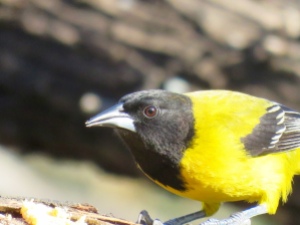






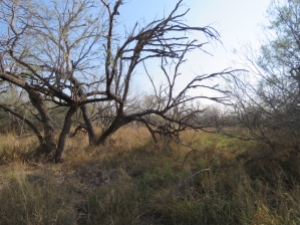





















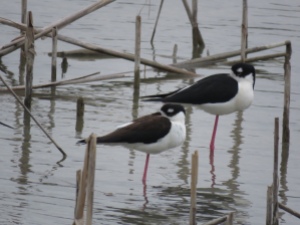




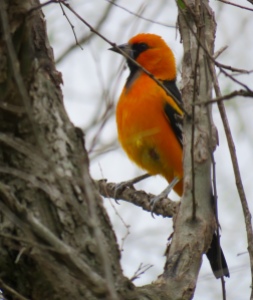









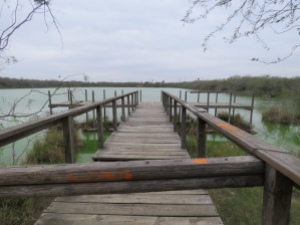

























































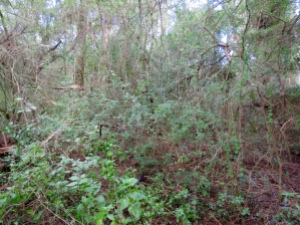















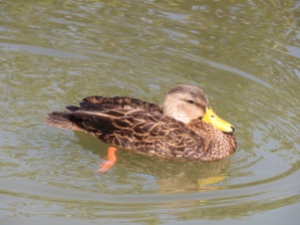
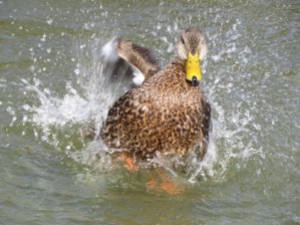
























Leave a Reply